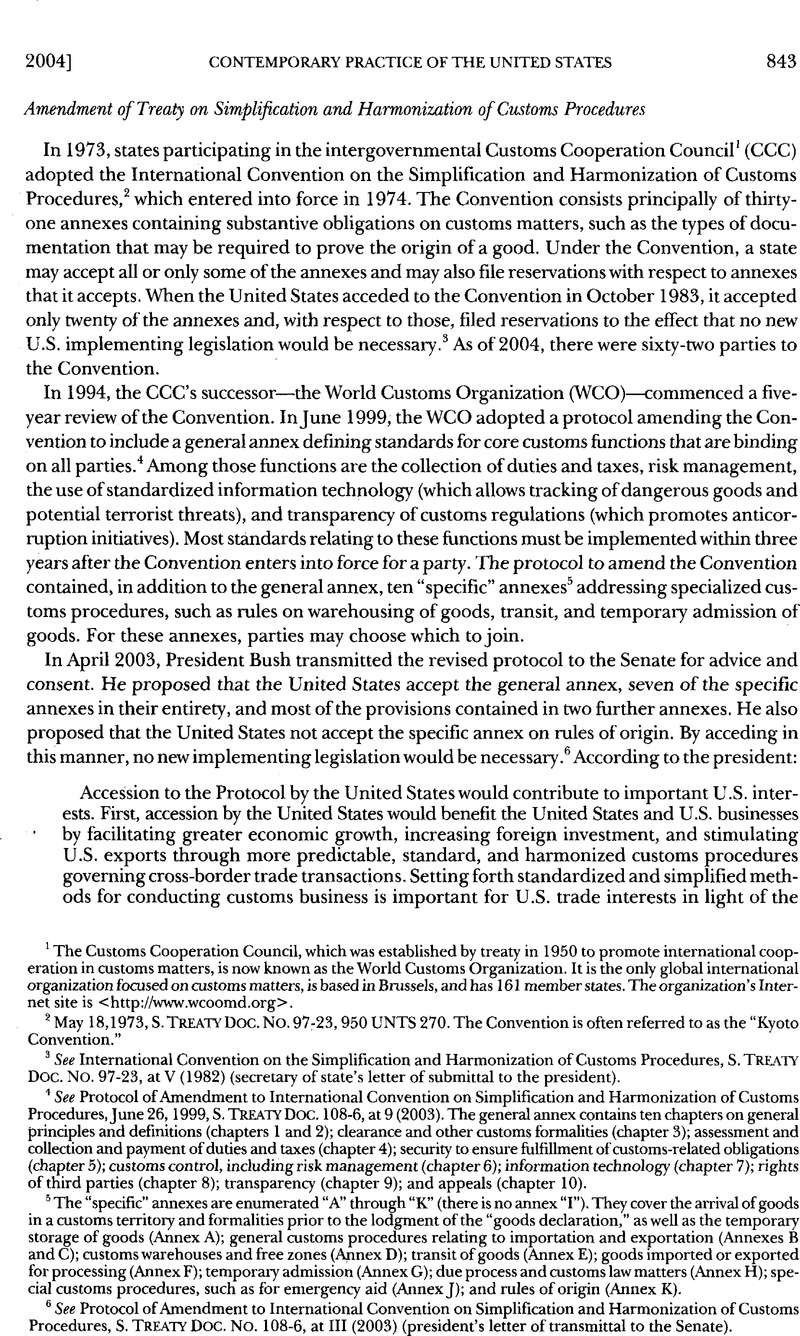Article contents
Amendment of Treaty on Simplification and Harmonization of Customs Procedures
Published online by Cambridge University Press: 10 March 2017
Abstract

- Type
- Contemporary Practice of the United States Relating to International Law
- Information
- Copyright
- Copyright © American Society of International Law 2004
References
1 The Customs Cooperation Council, which was established by treaty in 1950 to promote international cooperation in customs matters, is now known as the World Customs Organization. It is the only global international organization focused on customs matters, is based in Brussels, and has 161 member states. The organization’s Internet site is <http://www.wcoomd.org> .
2 May 18,1973, S. Treaty Doc. NO. 97–23, 950 UNTS 270. The Convention is often referred to as the “Kyoto Convention.”
3 See International Convention on the Simplification and Harmonization of Customs Procedures, S. Treaty Doc. NO. 97–23, at V (1982)Google Scholar (secretary of state’s letter of submittal to the president).
4 See Protocol of Amendment to International Convention on Simplification and Harmonization of Customs Procedures, June 26, 1999, S. Treaty Doc. 108–6, at 9 (2003)Google Scholar. The general annex contains ten chapters on general principles and definitions (chapters 1 and 2); clearance and other customs formalities (chapter 3); assessment and collection and payment of duties and taxes (chapter 4); security to ensure fulfillment of customs–related obligations (chapter 5); customs control, including risk management (chapter 6); information technology (chapter 7); rights of third parties (chapter 8); transparency (chapter 9); and appeals (chapter 10).
5 The “specific” annexes are enumerated “A” through “K” (there is no annex “I”). They cover die arrival of goods in a customs territory and formalities prior to the lodgment of the “goods declaration,” as well as the temporary storage of goods (Annex A); general customs procedures relating to importation and exportation (Annexes B and C); customs warehouses and free zones (Annex D); transit of goods (Annex E); goods imported or exported for processing (Annex F); temporary admission (Annex G); due process and customs law matters (Annex H); special customs procedures, such as for emergency aid (Annex J); and rules of origin (Annex K).
6 See Protocol of Amendment to International Convention on Simplification and Harmonization of Customs Procedures, S. Treaty Doc. No. 108–6, at III (2003) (president’s letter of transmittal to the Senate)Google Scholar.
7 Id. at III–IV.
- 1
- Cited by




